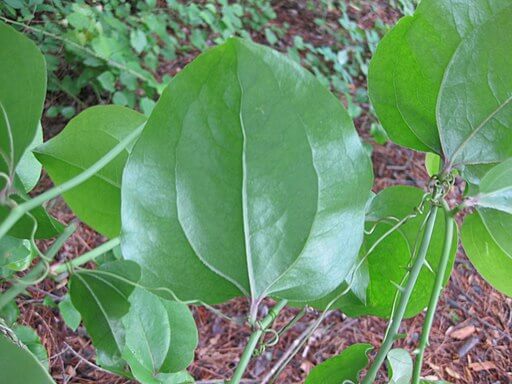
The roundleaf greenbrier(Smilax rotundifolia) is often underestimated as a wild edible. Even most of the published literature I have seen doesn’t hightlight the full utility of this plant as a wild edible. In reality this plant is an extremely useful wild edible at the right times of year. The roundleaf Greenbrier is plentiful in the eastern half of the US. The information in this articles likely applies to other species in the genus but Smilax is a diverse genus so there could be exceptions. Greenbrier is a visually unassuming plant especially when it’s mixed in with other prickery vines and shrubs such as multiflora rose, blackberry, raspberry, and barberry. roundleaf Greenbrier is a native plant and was likely a commonly used wild edible by native american people.
Edibility and culinary use
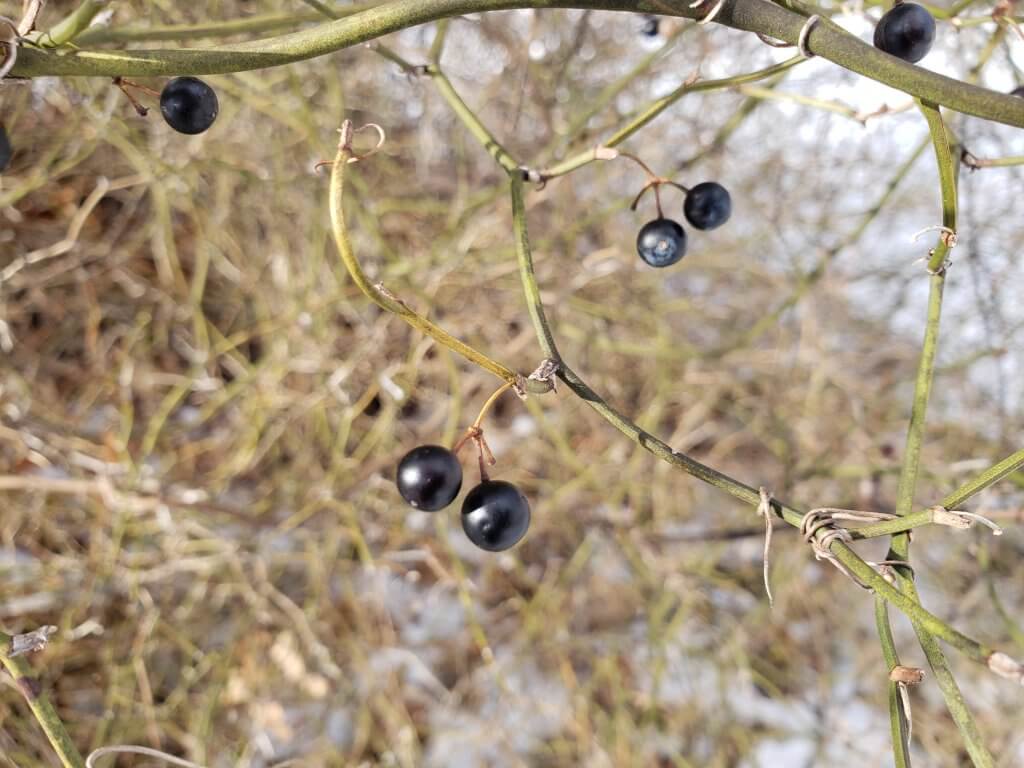
Most literature highlights the use of the roots as a starchy substance that can be added to foods. In my opinion this is somewhat of a secondary use compared to the other parts of the roundleaf greenbier that are edible. The new growth in the spring is an abundant and delicious vegetable. The texture is reminiscent of small asparagus but the taste is very mild with a hint of acidity. The new greenbrier growth can be eaten raw or cooked, just make sure it is new growth that hasn’t aged to the point that the thorns have hardened. The leaves are also edible in the spring and summer but they get tougher in the summer. The leaves too have a pleasant mild taste and can be eaten raw or cooked. There is another characteristic that is not often highlighted in most published literature and that is the edible berries that persist through the winter. There is not much substance to the berries since there are large seeds inside but any berry that persists throughout the winter and tastes good is something I add to my list of forageable foods.
Health benefits
This plant must be a truly wild edible because it does not have a common grocery store counterpart as is the case with plants like wild mustard greens and wild chicory plants. This fact makes it difficult to get good nutritional information. The good news is that according to www.pfaf.org there are no hazards associated with this plant. That and the fact that it doesn’t have any strong bitter components indicates that this is likely a very nutritious plant(extremely bitter flavors can sometimes indicate toxins). The mild acidic flavor could be ascorbic acid(Vitamin C) which is present in many wild edibles such as pine trees. Greenbrier has some history of medicinal use. A tea made from the leaves was traditionally used to sooth upset stomach and a poultice made from the leaves was used to sooth different types of external pain.
Identification

Once you know what to look for this plant is nearly unmistakable. There are a few main characteristics to look for. This is always a climbing vine with almost no growth toward the width of the vine, in other words it mostly grows longer, not wider. The width of the vine is usually not much bigger than ¼ of an inch in diameter. The vine is always solid green color, even in the winter although it may be speckled with dark sooty mold in a few places. The vine grows in messy bushy masses on wooded edges up to around 10′-20′ high. You should start being able to spot these masses from a distance once your familiar with the growth habit of greenbrier. The thorns have a characteristic shape and growth pattern. They are not crowded on the stem, they appear clearly separated , sometimes by a few inches. The thorns grow straight off the stem at roughly 90 degrees, they are not curved or tilted in any way. this will help you distinguish greenbrier from wild rose which has large curved thorns. Small tendrils can be seen on the vine assisting with it’s climbing behavior. The black greenbrier berries develop in loose bunches in the fall and persist through the winter, I have seen them stay on the vine all the way into march. You can see them from a little bit of a distance so you won’t need to climb through looking for them, but you might need to climb through to get to them.
Cautions
The only caution with this plant is the thorns. You can get your legs tangled up when you’re climbing through to get the berries.
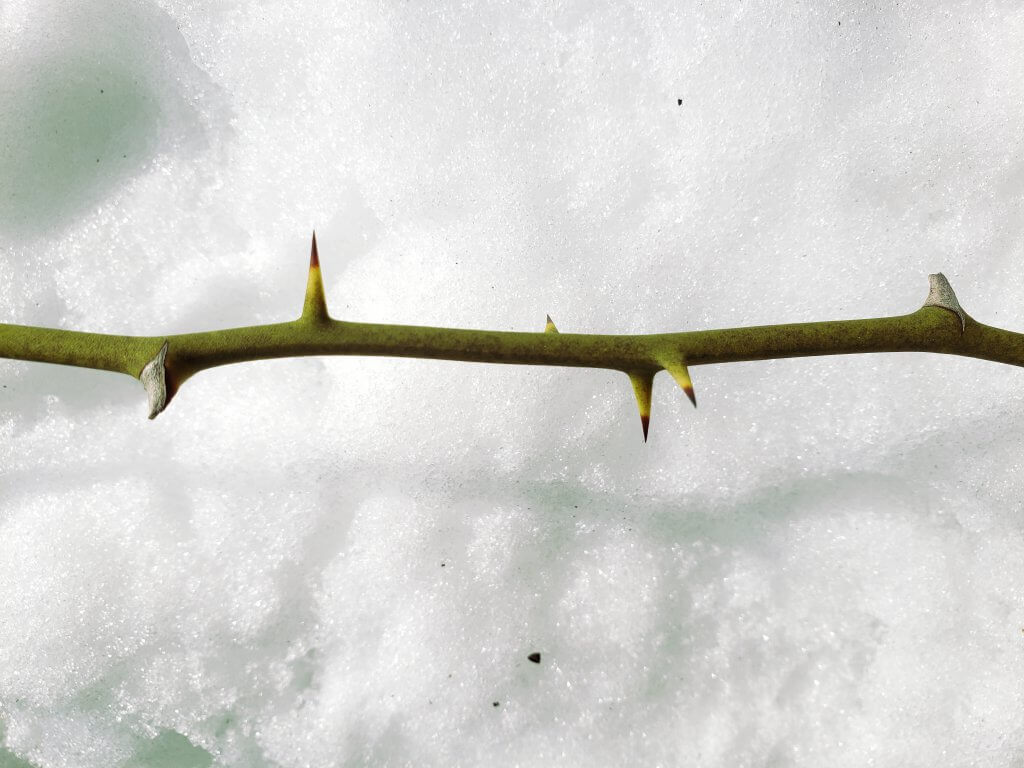
Conclusion
Roundleaf greenbrier is an often underutilized native wild edible. This plant has edible parts that are available during much of the year, even in the winter when there are not a lot of other wild edibles available. Always practice responsible harvesting practices when foraging but with this plant You can harvest a substantial amount of new growth and berries because harvesting the new growth and berries does not kill the plant and it is a common and resilient plant so you don’t need to worry too much about hindering plant growth or reproduction. So this winter and spring take a look at wooded edges for the messy vine masses that are characteristic of roundleaf greenbrier, they are perennial so once you find them you can return year after year.
Many of our readers find that subscribing to Eat The Planet is the best way to make sure they don't miss any of our valuable information about wild edibles.
See our privacy policy for more information about ads on this site

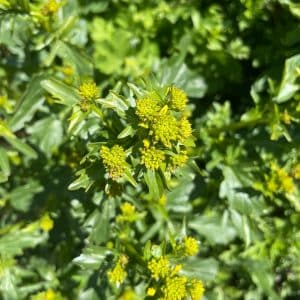
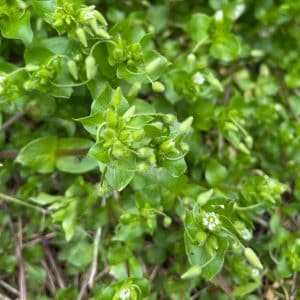
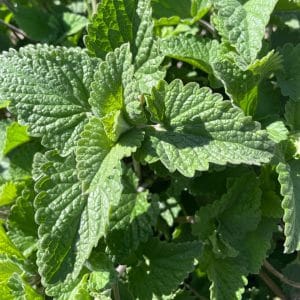


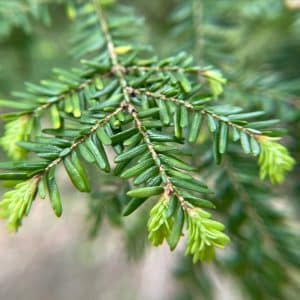
10 Responses
My experience confirms Greenbrier’s resilience. I could not get rid of it even after battling to tear up the tough long running near surface roots.
It can definitely be a nuisance. Especially if you ever get stuck climbing through it for some reason.
The berries are vaguely sweet and reminiscent of chokecherry. I am glad there are used for this pesky plant. I wonder if the seeds can be used for anything?
After making jelly from the berries this year, I had thousands of the orange/red seeds, so I dried them. There is a latex (stretchy) coat around them that doesn’t dissolve in water, but when dry I could rub it off. I wish I knew more about the contents or uses of that. But anyway I made a lovely soapberry/brier berry necklace out of the beads using a bead drill. The thing I found interesting is that the ‘sawdust’ made from the seeds being drilled smelled nutty, almost like sweet almonds. I have looked and looked to find if they could be milled into flour—- haven’t found anything. I did taste some and it is nutty flavored, not bitter, and I didn’t get sick, but man we have a lot of these berries on our property and the jelly takes very little sugar to taste like a mild blueberry jelly and it’s color is deep purple. If the seeds could be edible they would make a good nutty flour….
Side note- I am hesitant to try grinding them without outside sources saying it’s ok because I know some seeds contain a cyanide compound and that can be an ‘ ‘almond’ smell, like the Alamo vine, hawthorns and saskatoons, if anyone has more information on the brier berry seeds, I’d love to know too.
Do you have a recipe to make jam with the smilax berries? My husband just brought home a bucket full from work.
This plant is prolific in Georgia! I joked with my hubby 10 years ago that it was unfortunate that they were not edible, as far as I knew. So I kept looking and standing by my motto that every plant has a purpose. So in about 3-4 weeks, I’ll be giving the shoots a try! Fingers crossed !
This year brought a tone of shoots- we boiled and puréed them , and used a pea soup recipe, and my kids could not tell the difference between regular pea soup and green brier soup.
Uses for Smilax tincture
Uses for similar tincture